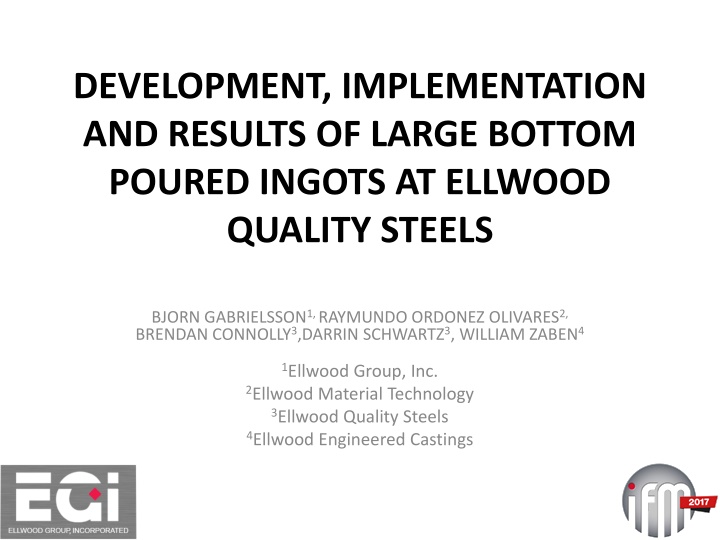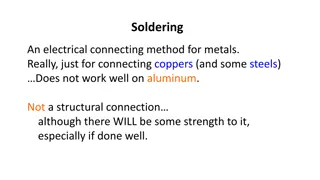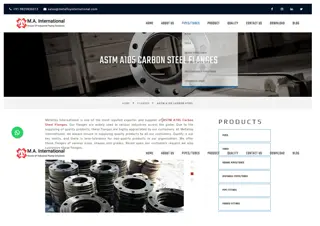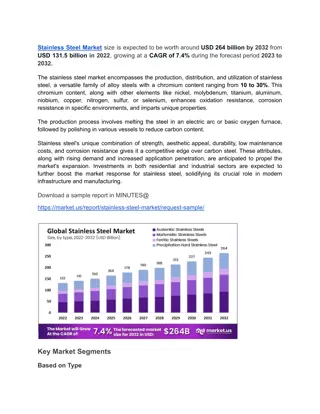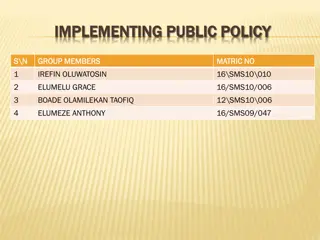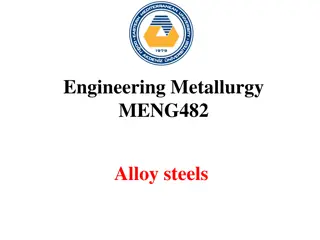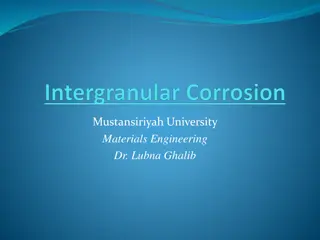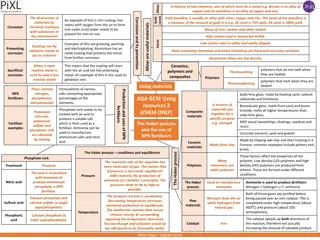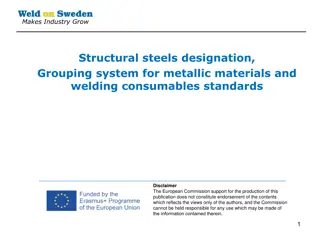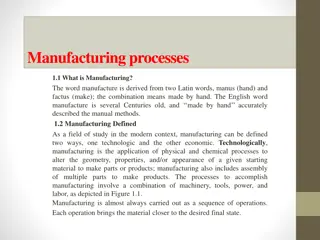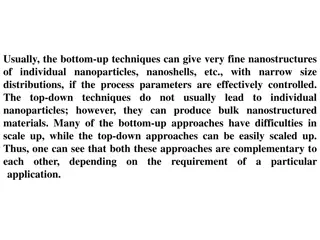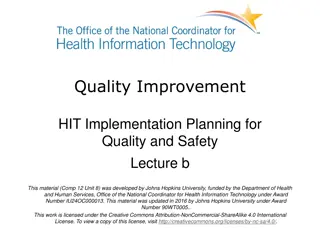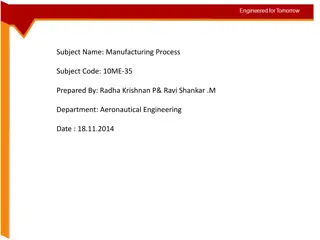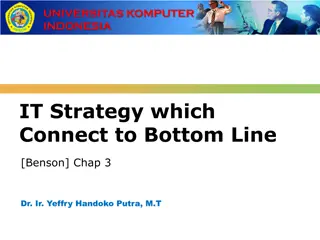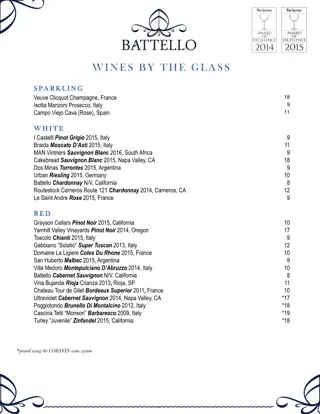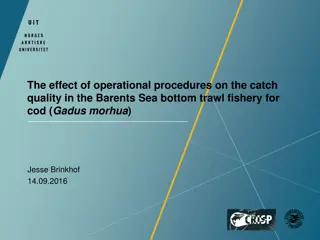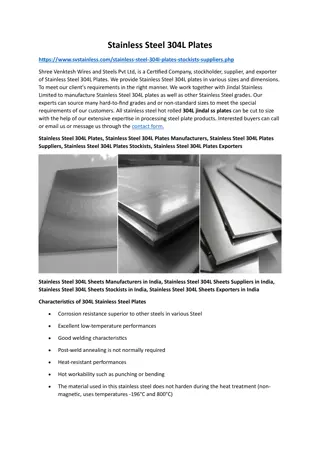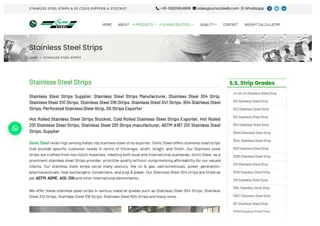Development and Implementation of Large Bottom-Poured Ingots at Ellwood Quality Steels
Ellwood Quality Steels initiated the development and implementation of large bottom-poured ingots to meet the demand for bigger forging ingots for various industries. The project involved designing ingots over 50 Mton and exploring hybrid hot-top production options. The innovation allowed for the efficient production of ingots exceeding 70 Mton, catering to sectors like tool steel, power generation, transportation, mining, and marine propulsion. They achieved significant success in clean steel production and operational excellence at their melt shop, generating millions of high-quality forging and ring rolling ingots since 1985.
Download Presentation

Please find below an Image/Link to download the presentation.
The content on the website is provided AS IS for your information and personal use only. It may not be sold, licensed, or shared on other websites without obtaining consent from the author.If you encounter any issues during the download, it is possible that the publisher has removed the file from their server.
You are allowed to download the files provided on this website for personal or commercial use, subject to the condition that they are used lawfully. All files are the property of their respective owners.
The content on the website is provided AS IS for your information and personal use only. It may not be sold, licensed, or shared on other websites without obtaining consent from the author.
E N D
Presentation Transcript
DEVELOPMENT, IMPLEMENTATION AND RESULTS OF LARGE BOTTOM POURED INGOTS AT ELLWOOD QUALITY STEELS BJORN GABRIELSSON1, RAYMUNDO ORDONEZ OLIVARES2, BRENDAN CONNOLLY3,DARRIN SCHWARTZ3, WILLIAM ZABEN4 1Ellwood Group, Inc. 2Ellwood Material Technology 3Ellwood Quality Steels 4Ellwood Engineered Castings
Outline Background New Castle, PA complex Overview of Ellwood Quality Steels (EQS) Clean steel production, low hydrogen Mold and hot-top design for high quality large forging ingots Design and development of ingots >50 Mton HYBRID hot-top Production options of large ingots Sandwich pouring Development of new ingots >70 Mton Results Summary and conclusions
Background Ellwood City Forge (ECF) required larger forging ingots to feed the new 45 MN open die press commissioned in 2008 EQS heat size 47 Mton could not produce necessary 70 Mton ingot from a single heat to service industries such as: Large tool steel blocks Power generation Transportation Mining Marine propulsion North American Forgemasters (NAF) in 2012 decided to install 90 MN open die press that would handle up to 200 Mton ingots
Ellwood Quality Steels Melt Shop Started up end 1985 50 Mton UHP EAF with EBT 2X ladle furnace with EMS 1X vacuum treatment station with combined Ar + EMS Stirring 2X teeming bays West teeming bay 24 47 Mton ingots by overhead crane East teeming bay 2 24 Mton and 60 170 Mton ingots by overhead crane and teeming car
Ellwood Quality Steels Melt Shop Key Performance Indicators 2016 KPI EAF Gross T-T-T EAF Power On Time EAF Power Off Time Productivity Scrap Heats due to Off Chemistry Value 53.0 minutes/heat 36.2 minutes/heat 16.8 minutes/heat 27.1 heats/day 0 >8,000,000 Mton of high-quality forging and ring rolling ingot produced since start up in late 1985
Clean Steel Production 1. Complete separation of oxidized EAF melt down slag Eccentric Bottom Tapping (EBT) Slag raking at LF No. 1 Strong precipitation deoxidation during EAF tapping Minimal reoxidation during ladle refining Complete liquid steel coverage with reducing slag Electromagnetic stirring (EMS) Elimination of reoxidation during bottom pouring Ar-shrouded teeming stream with <0.5% O2 High Al2O3mullite refractory hollow-ware Complete teeming flux coverage of liquid surface during teeming Separation of non-metallic inclusions during solidification Big-end-up molds Mold aspect ratio Optimized hot-top 2. 3. 4. 5.
Hydrogen Removal Vacuum treatment at <1.0 mbar Combined EMS stirring and Ar-gas bubbling
Hydrogen Pick Up Hydrogen is sampled and analyzed for every heat once the liquid steel level reaches the hot-top
Critical Mold and Hot-top Parameters Ingot aspect ratio (length/mean diameter) Ingot taper (%) Hot-top volume (% of total volume) Hot-top insulation and application Hot-top shape and fit to mold (continuous mold extension vs bottleneck design) Bottleneck hot-top has several disadvantages Bottleneck shoulder can be a trap for inclusions Solidification front tends to close above last liquid to freeze
MAGMA Solidification Modeling Niyama criterion used for quantitative evaluation of ingot quality For steel critical value of Ny> 1, which indicates sound material free of microshrinkage Ellwood uses Ny> 2.0 in order to clearly see the effect of mold and hot-top design changes
Critical Ingot Hot-top Parameters and their Influence on Ny Ingot size Mton 33 38 46 Taper % 9.4 7.6 9.4 L/D ratio 1.30 1.62 1.61 Hot-top volume % 17.1 14.6 19.1 Type of hot-top continuous continuous continuous Ny<1.0 %body 0 0 0 Ny< 2.0 %body 26 42 41
Design and Development of Ingots > 50 Mton Hybrid Hot-Top Development work focused on 70 Mton ingot To be forged on 45 MN press in 2008 Concept was to significantly improve on existing hot-top technology for superior performance
70 Mton Ingot Solidification Pattern for Standard and Hybrid Hot-top
Production of Large Ingots >50 Mton How to get this large mold filled with liquid steel? This is a huge challenge for any steelmaker when the ingot weight significantly exceeds the nominal heat weight Operational logistics (SAFELY getting the liquid from the ladle into the mold) Minimization of reoxidation Minimization of hydrogen pick up
Quality Considerations for Various Teeming Processes Process Complexity High Low Low Med Med Space Process H Pick up None Low Low Low Med Productivity Low High High High High Requirement High Low Low Low Med Vacuum Stream Degassing Interrupted Bottom Pour Sandwich Bottom Pour Sandwich Ar Top Pour Multiple Trumpet Pour Interrupted Bottom Pour was selected for the 70 Mton ingot
Process Sequence for Sandwich Pouring Ladle No Location 1 Teem car 2 Crane 2 Crane 1 Teem car 1 / 2 Teem car / Crane Lower simultaneously to seal trumpet shroud 1 Teem car 2 Crane 2 Crane 2 Crane 2 / 3+ Crane Exchange for full ladle (if more than 2 ladles) Action Locate ladle over trumpet Install ladle-to-ladle shroud Open slide gate and submerge shroud Open slide gate Adjust teeming mass flow rate Fully open ladle slide gate to fill ladle 1 Close slide gate when nearly empty Remove ladle-to-ladle shroud
Infrared Camera View into Lower Laldle Difficult to observe ladle-to-ladle shroud Infrared camera installed to assist Steel Pourer with good view
Development of Even Larger Ingots up to 170 Mton Simultaneous with engineering and modification to the teeming car three (3) new larger ingots were developed: 90 Mton (2x ladles) 127 Mton (3x ladles) 170 Mton (4x ladles) Hybrid hot-top was further optimized for each new ingot size to maximize good steel in ingot body Ingot size Mton 90 127 170 Taper % 10.2 11.3 10.8 L/D ratio 1.32 1.25 1.46 Hot-top volume % 20.3 20.5 19.0 Type of hot- top continuous continuous continuous Ny<1.0 % body 0 0 0 Ny< 2.0 % body 20 16 17
MAGMA Solidification Modeling for the Three New Larger Ingot Sizes 22 hrs 44 min 30 hrs 17 min 27 hrs 58 min
Results / Quality Metallurgical evaluation of three 127 Mton ingots and one 170 Mton ingot as follows FM forged to 3:1 reduction Heat treated Milled four sides and UT to 1.5 mm FBH or better Hot-top crop including portion of good steel reforged 13:1 total reduction Saw cut slices every 1% of original hot-top volume Slice also taken in the ingot body
Carbon Segregation 3x 127 Mton Ingots 170 Mton Ingot
Oxygen Total 3x 127 Mton Ingots 170 Mton Ingot 170 Mton Microcleanliness (ASTM E45) - Sulfur-containing grade, analysis at hot-top junction A B C D Sample I.D. T H 2.0 2.0 3.0 T H 0.0 0.0 0.0 T H 0.0 0.0 0.0 T H 0.5 0.5 0.5 Surface Mid radius Center 1.5 2.0 3.0 0.0 0.0 0.0 0.0 0.0 0.0 1.0 0.5 1.0
Final Hydrogen NO hydrogen flaking of the forgings due to low hydrogen practice and proper post-forge thermal handling
Summary and Conclusions Teeming of ingots >50 Mton has evolved from the interrupted pouring process to the sandwich pouring process at EQS. High quality ingots of up to 170 Mton have been developed and produced at EQS. Excellent internal steel quality thanks to consistent application of the following principles: Fundamental metallurgical understanding of low hydrogen, clean steel production Application of known critical parameters for design of ingot molds Optimization of ingot and hot-top design through solidification modelling Proprietary hybrid hot-top design with superior long term insulating performance
